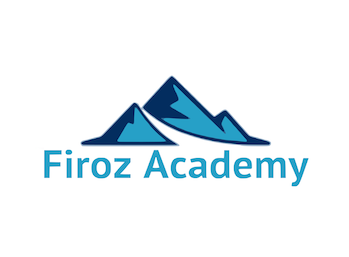
Dear Friends,
There are few issues more fraught with struggle and controversy than the education of women in Afghanistan. Firoz aims to change that.
Throughout the developing world, educated women are more likely to hold jobs, live in wealthier households, raise healthy children, and lead healthier lives. Women and girls under 25 make up a third of the population of Afghanistan. It follows that their education and workforce participation will be essential for the country’s development.
What is the state of women’s education in Afghanistan today?
Afghanistan suffers from the highest gender disparity in education in the world, with only 71 girls in primary school for every 100 boys and only 21 percent of girls completing primary education.
The average Afghan girl stops attending school at age 8, compared to age 13 in her male peers. In all, about 3.3 million children, most of which are girls, remain out of school.
Less than a quarter of Afghan women are literate, compared with 51 percent of men. Even fewer women, about 19 percent, participate in the workforce.
What are the biggest successes thus far?
Despite these daunting figures, Afghanistan has made recent strides in women’s education and economic roles.
While the percentage of adult women that are literate in Afghanistan is among the lowest in the world, literacy rates among adolescents and young adults aged 15-25 point toward a significant improvement. Forty-six percent of women in this age group—twice the overall rate for all adult women—can read and write.
The 8.4 million students enrolled in Afghan primary and secondary schools represents a more than 8-fold increase since 2001. More than 3 million of the newly-enrolled students are girls.
Several initiatives will contribute to continued improvement. A new scholarship program funded by USAID provides funds for university education for over 720 Afghan girls over five years with the goal of creating leaders that will foster an environment of women’s empowerment. Organizations like the Afghan Institute of Learning and Code to Inspire aim to make big strides with targeted education for girls aimed toward practical, marketable applications.
In addition to the educational gains, more women hold positions of power than in any point in Afghan history. Four ministry directorships, three ambassadorships, and more than a quarter of parliamentary seats are held by women.
What are the biggest barriers?
Numerous cultural and safety-related barriers continue to contribute to high dropout rates for adolescent girls. Among cultural barriers, early marriage and lack of female teachers are the most pronounced.
Girls’ personal safety is threatened daily by long and dangerous routes to schools and lack of security upon arrival. According to data from the United Nations, there were at least 132 documented attacks on schools in Afghanistan in 2015.
Lack of sanitation in schools and adequate facilities for schools are also contributors—half of schools are run out of mosques, tents, or private homes.
Girls in rural areas suffer disproportionately in the disparity in enrollment due to poverty, lack of security, and more conservative communities.
On the supply side, the Afghan education sector faces many challenges to improve education delivery, including insufficient resources to ensure security, lack of trained teachers, and poor infrastructure.
How can Firoz help?
At Firoz academy, young women’s education is core to our mission. We provide for this in several ways:
Firoz will provide world-class, practical education for young Afghan women. All of Firoz’s courses will enroll a minimum of 50% female students, and special attention will be provided to the challenges of growing up female in Afghanistan.
Firoz will give women safe spaces to learn. All our classes will be held in clean, modern facilities will adequate security. When it is unsafe for a girl to commute between home and school alone, we will provide transportation.
Firoz will connect young women in Afghanistan with high-paying global service economy jobs. These jobs are much more accessible to women than traditional paid industries within the Afghan cultural context, and can be done from home or other safe spaces.
In short, educational and economic opportunities for Afghan women are improving, but there is still so much more work to be done. We at Firoz aim to improve the lives and economic opportunities of women through world-class, safe, and practical education that will prepare women to work in the global services economy. We hope you will join us.
From the Firoz team.